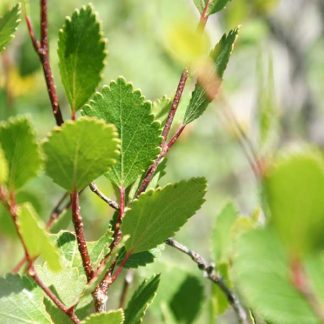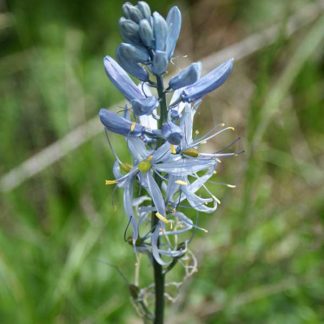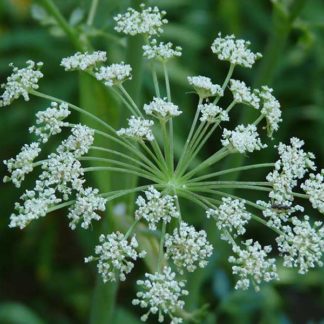wet meadows
Showing 1–12 of 52 results
-

Allium brevistylum / short-styled onion
- clusters of 7-15 urn-shaped flowers atop a single flowering stalk
- pink with 6 tepals
- leaves much shorter than the inflorescence
- leaves grow from base and are "grass-like"
- swampy meadows and along streams
- smells like onions/garlic
-

Allium schoenoprasum / chives
- globe-shaped umbels of pink flowers with darker midveins (stripes)
- hollow, tubular leaves and flower stalks
- smells like onions
- grows from bulbs in clumps or sometimes individually
- wild in wetlands, fens, meadows; cultivated in gardens
-

Angelica arguta / Lyall’s angelica
- white to yellow to pink-ish
- compound umbel with teeny individual flowers
- many-toothed compound leaves with sheath surrounding petiole
- leaflets egg-shaped to narrowly oval
- pungent parsley/celery/anise scent when leaves crushed
-

Antennaria spp. / pussytoes
- small clusters of white flowers, often fringed with red
- flowers look like a cat's toes, sort of
- newest leaves silvery/hairy
- exposed, in many different habitats
-

Anticlea elegans / mountain death camas
- cream to greenish-white flowers; overall hexagonal appearance
- branched flowering stem with multiple flowers not tightly packed
- 6 tepals (petals + sepals), greenish-yellow nectar glands
- grass/lily-like leaves
- blooms in summer (July/August)
-

Apocynum cannabinum / common dogbane
- herbaceous perennial with red stems and long/narrow leaves
- leaves have prominent veins
- leaves and stems exude white latex if broken
- white, bell-shaped flowers held erect in stalked clusters
- seedpods long, thin and brownish; in pairs
- often near streams or in moist places
-

Argentina anserina / silverweed
- silvery, compound leaves on low, creeping stems
- yellow, 5+ petaled flowers; lots of stamens
- fens, other wetlands, but also roadsides
-

Betula pumila / bog birch
- limited to bogs/fens/swamps and wetlands
- shrub to about 6 feet tall
- reddish bark on twigs
- leaves rounded-fan shaped, ca. 1 inch; coarsely toothed
- inflorescences - catkins (cone-like); separate male and female
-

Bistorta bistortoides / American bistort
- rocky areas, tundra/alpine
- inflorescence a 2" dense cylinder with many teeny white flowers
- notable protruding stamens
- leaves basal, long/thin and leathery
-

Camassia quamash / small camas
- immediately visible for its star-shaped blue flowers and yellow anthers
- flowers borne on a spike-like raceme, opening from the bottom up
- multiple flowers open at one time
- leaves are grass-like, growing from a bulb
- large seed capsules with ca. 30 roundish black seeds, ripe in late summer
-

Carex spectabilis / showy sedge
- roadsides or in wet and seasonally flooded meadows
- showy inflorescences... yellow (stamens) above white (stigmas) on a purple background
- grass/iris-like leaves up to 2 feet tall
-

Cicuta douglasii / water hemlock
- HIGHLY TOXIC
- primarily on continuously wet soils, e.g. ditches, stream banks, pond margins, marshes.
- white compound umbel inflorescence typical of the Apiaceae/Umbelliferae
- multiply compound leaves with prominent veins ending in notches between lobes
Showing 1–12 of 52 results